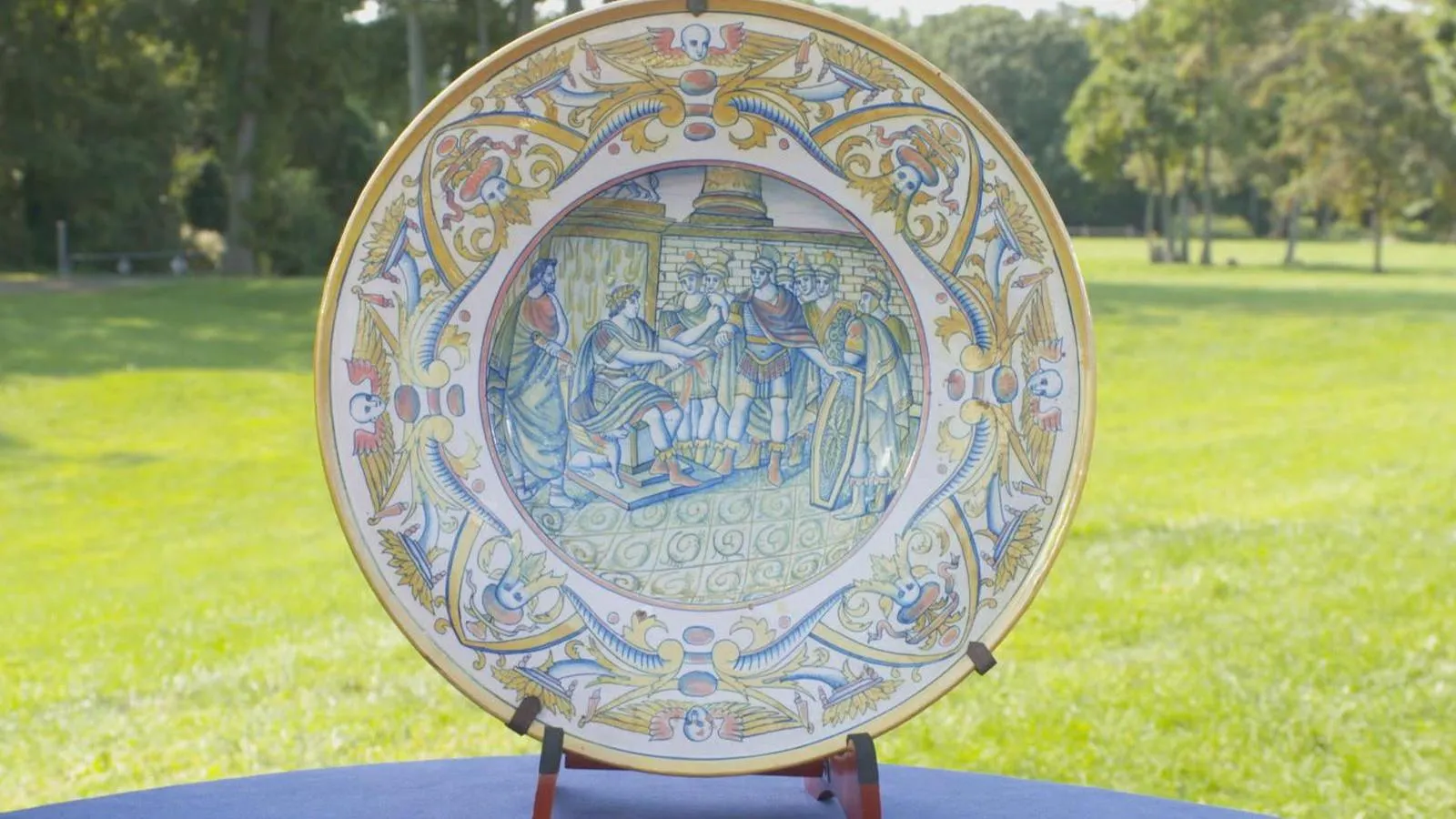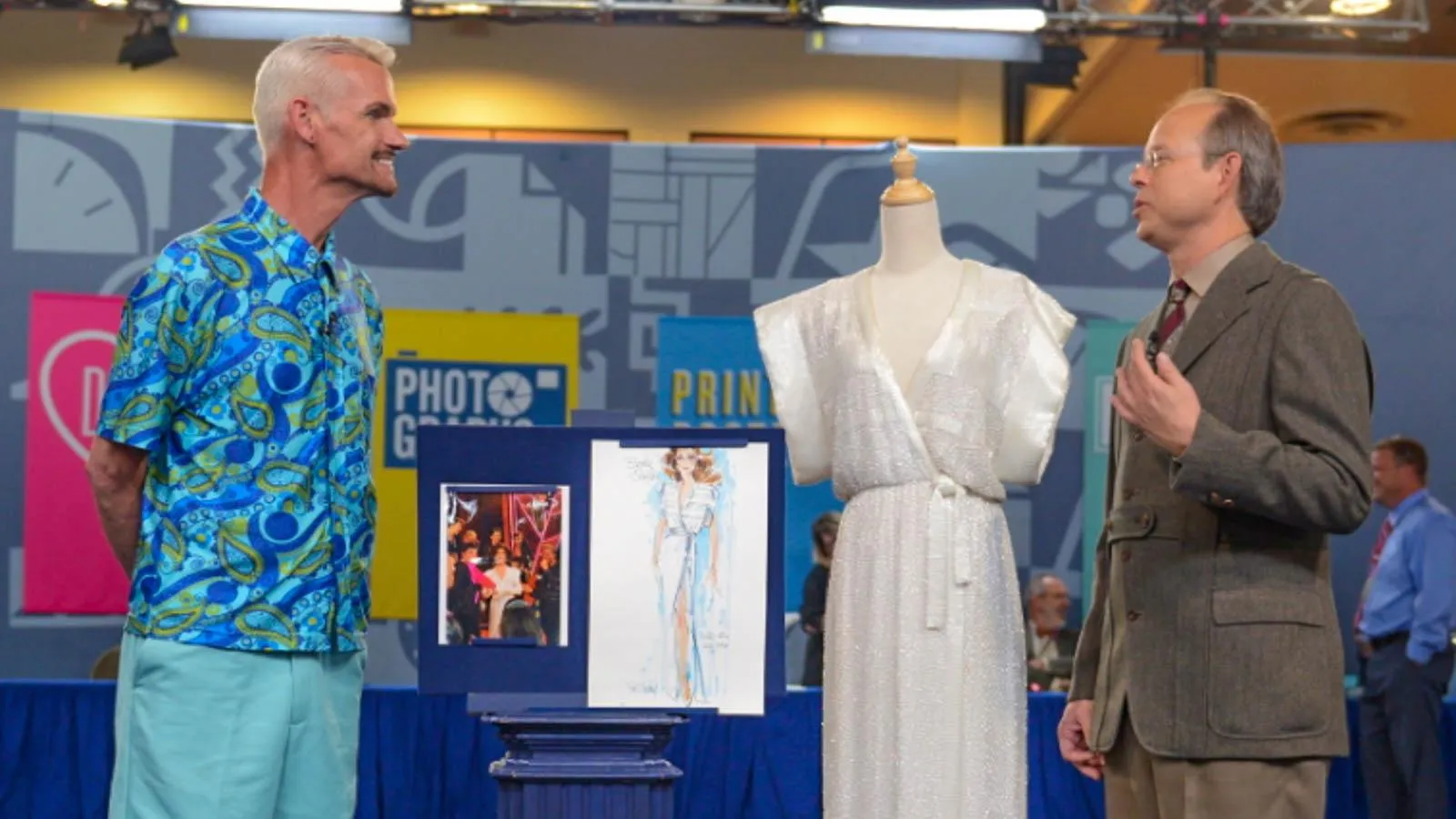GUEST: I have brought a piece of glasswork that was given to my mother by Dale Chihuly, I think back in about 1965. I was raised in Madison, Wisconsin, and my sister was a student at the University of Wisconsin in the art department. And Dale was, I think, a teaching assistant. She met him through an art class, and she invited him and another friend out to Sunday dinner. And they came out to Sunday dinner several times at our house. As a thank you gift, he gave this to my mother. Well, he's very charismatic, and he was a major force. (laughing) When he would come out for dinner, we would just all be blown over. And I remember my mother saying, "That young man will go far." (chuckling) So he was-- and she was not mistaken. At that time, he was just setting up the glassblowing facility in Madison. And we actually got to go down and see where they were building it, and we got to see them blow glass. I don't think I saw this exact piece, uh, being worked on, but it's not signed. I don't have any documentation on it. My mother's passed away, my sister's passed away and I just would, kind of, like to know how I would go about authenticating it.
APPRAISER: Oh, my gosh, I'm so excited you brought this today.
GUEST: (laughs) Yes...
APPRAISER: This is what I've been waiting for.
GUEST: Yes. Okay.
APPRAISER: It's amazing. Dale Chihuly introduced a lot of people to art glass and the art glass collecting and has become one of the hugest names right now.
GUEST: Yes, yes.
APPRAISER: But this is an early piece.
GUEST: Yes.
APPRAISER: This is an early piece he actually blew!
GUEST: Yes.
APPRAISER: Uh, he had an accident, you know? And so he lost an eye, and he also had another accident where he hurt his shoulder.
GUEST: Yes.
APPRAISER: And as you could see, when they were blowing glass, that's a really heavy duty with lots of heat, and got to be very strong to do that.
GUEST: Yes.
APPRAISER: So afterwards, he started working with a team...
GUEST: Mm-hm.
APPRAISER: ...and so now he designs. Think of him more as, like, the choreographer and the-the glass blowers are the dancers, um, to all the glass today. What I like about early works by modern masters is that it really shows their process, and you can see how they blew it in this kind of asymmetrical piece. And they're working out what they're doing, and they have the trails and the pinching. But it's interesting that this is very typical of the style of the period, too. So about circa 1965. It is not signed. That's not unusual. It was probably an experimental piece at the time...
GUEST: Yes. Yes.
APPRAISER: ...and a lot of those got chunked out. At auction today, I would estimate it at $2,000 to $3,000.
GUEST: (chuckling) I'm amazed. That's very surprising.
APPRAISER: I would write to his studio.
GUEST: Okay.
APPRAISER: And just kind of introduce yourself, confirming, "Do you remember me? Do you remember this piece?" Send a picture of the piece and see if his studio will confirm the piece.
GUEST: Ah, okay.
APPRAISER: Everybody else will know. And keep that piece of paper with it...
GUEST: Okay, sounds really good.
APPRAISER: ...for always.












